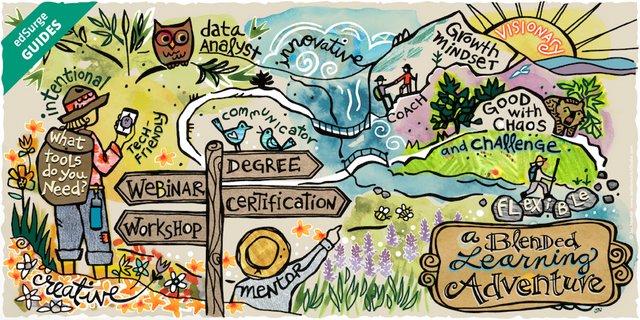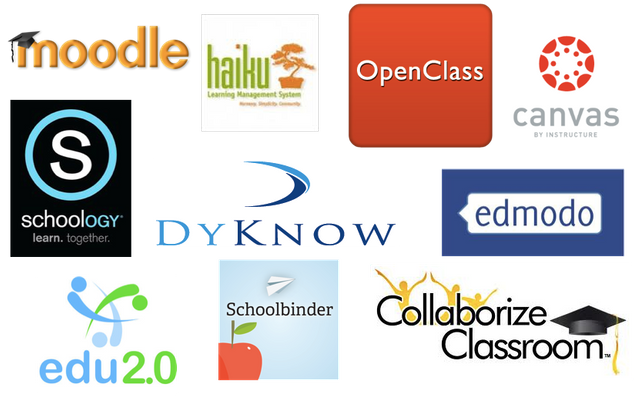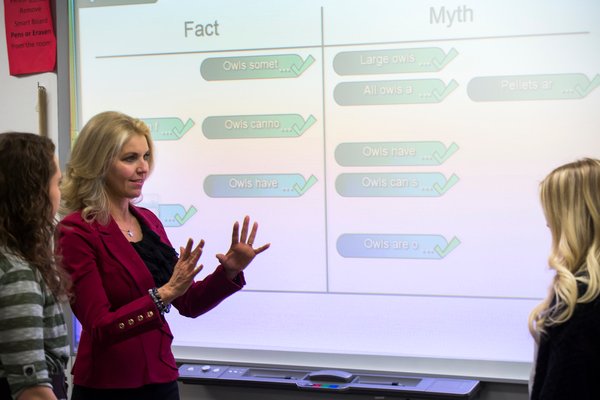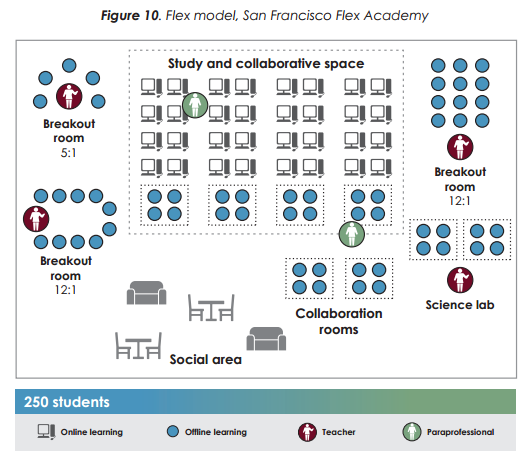BLENDED LEARNING SERIES PART #9: Flex Model (No, Not Those Muscle Babes in Sexy Bikinis)
The Flex model is largely focused on ONLINE Learning pedagogy. In fact, in this particular model, students spend most of the time ONLINE rather than with a real-time face-to-face instruction.
Before you go any further…
If this is the first blog post you read in this series, I’d like reiterate what is Blended Learning before you read any further. From Wikipedia:
“Blended learning is a formal education program in which a student learns at least in part through delivery of content and instruction via digital and online media with some element of student control over time, place, path, or pace.”

PHOTO CREDIT: EDSURGE.COM
Components of a Flex Model
To fully understand the flex model, here are the components that constitute the model and their brief explanations.
Online Learning

PHOTO CREDIT: ETHSEDTECH
A very reliable online learning management system (LMS) is imperative in this configuration since most of the time students interact with the system. To reiterate, the following LMS are recommended for the Flex model:
- Moodle. One of the most popular LMS due to its robust features and cost, which is zero because it is open-source.
- Edmodo. As what it claims in their website, Edmodo is free for teachers and students. Thousands of schools worldwide trust Edmodo.
- Schoology. Also free for students and teachers, Schoology offers a Facebook-like interface along with many functionalities of a typical LMS and more.
There are plenty of LMS around some of them you may install on your own either online or in a LAN environment. You may visit the Capterra website for a comprehensive list of learning management system software.
Offline Activities
Offline activities are part of the Flex model but are often used as a supplement to reinforce delivery of instructions or to augment content and concepts of the subject. Such activities may consist of field trips, projects, or homework.
PHOTO CREDIT: COLORADOCOLLEGE
Different Learning Modalities
Although Flex model focuses more on ONLINE learning methodology, other learning modalities are still present to support main content delivery system. Among the learning modalities are:
- Intervention. Students are given assistance according to the data gathered from the LMS.
- Seminar. Students get more understanding of concepts and related ideas presented by a teacher on-site.
- Direct Instruction. As its name implies, this is the traditional setup where teachers provide instructions or give lectures.
- Group Projects. A collaborative effort to apply theories learned ONLINE among students and may be supervised by on-site instructor.
- Personal Trainer. A one-on-one setup where the teacher coaches the student on a more personal time and fashion.
On-site Teacher and Brick-and-Mortar Campus
The Flex model does not do away with teachers. Instead, there is a teacher of record is on-site, and students learn mostly on the brick-and-mortar campus. Homework assignments are, of course, done at home. The teacher of record or other adults provide face-to-face support on a flexible and adaptive as-needed basis through activities such as small-group instruction, group projects, and individual tutoring.
The following photo is taken from one of the images posted on FB Group called St Roberts Global Education & Management Services.

This company offers distance learning education here in Bangkok and is currently serving expats from the Philippines and other countries to get their Master’s degree or to simply fulfill the requirement of the Thai Government of a certification.
Face-to-face Support

PHOTO CREDIT: EXCELLENCEINTEACHINGSCIENCE
Face-to-face support varies from school to school. Other offer minimal face-to-face support depending on how the course is designed or how intensive face-to-face support is required.
Actual face-to-face with an instructor or teacher may be daily or once a week. Again, depending on the intensity of the course, this schedule may vary.
Obvious Advantages of Flex Model

PHOTO CREDIT: SMUBLENDEDLEARNING
The students involved in this model have clear control over pace and path of learning the course. However, this could be a difficult transition for students who are used to the traditional classroom setup yet an advantage to those who are more independent in their learning.
Flex model provides learning even outside the classroom or outside the school campus. Since this model leans towards ONLINE learning, the students are not limited or confined to a physical location thus giving more access to those who may not have the opportunity to go to a physical school plant.
Student autonomy is evident in Flex model and this changes how teachers interact with students and how they spend their time during the course. This gives teachers more time to communicate with students in more personal level.
Summary
The Flex model is a very effective model for higher level of learners since students in this level are more responsible and more independent in their learning. A very good LMS is required and instructors who are readily available when needed. Different modalities of learning are still needed to cater to the students based on their personal needs. The Flex model allows students to dictate their pace and path of learning.
Good information, thanks
You're welcome and thanks for the upvote.